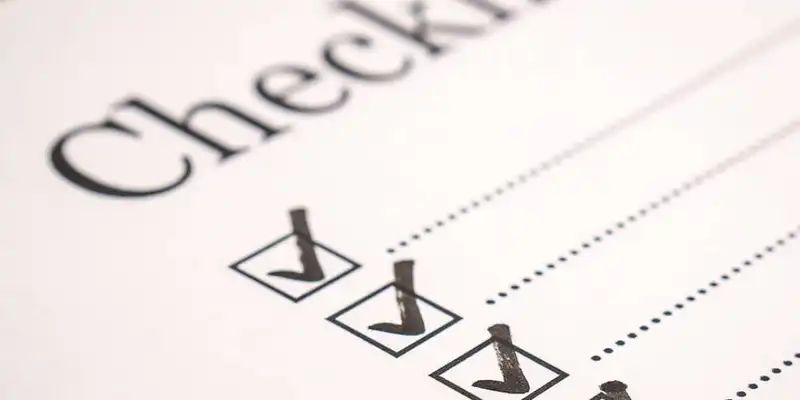HACCP Standards and Its Role in the Restaurant Industry
Introduction
The food management system goes beyond the hazard analysis critical control point. It incorporates the principles of food management systems. Restaurants should build a system for managing quality and continuous improvement throughout the process.
Multinational food manufacturers are asking restaurant owners and other players in the food supply chain to implement Food Safety Management systems to improve brand protection. The GFSI (Global Food Safety Initiative) has benchmarked several Food Safety Management System Certification Programs in which the HACCP is based.
In this article, we will look at the meaning of HACCP, HACCP principles, and how implementing this program can help your restaurant.
What is HACCP?

HACCP represents the Hazard Analysis and Critical Control Point. This system is internationally recognized, and it minimizes the risks of safety hazards in consumer foods.
According to the requirements of a HACCP system, you should identify and control potential hazards at particular points in the process. It encompasses physical, chemical, and biological hazards.
Companies that take part in the manufacture, processing, and handling of any food products can apply the HACCP system to eliminate or minimize food safety hazards in the product. One of the critical sectors that should not miss out on the use of the HACCP system is the hospitality industry.
HACCP Certification and Employee Training
It is good to go through HACCP certification and employee training before you implement this system into your restaurant, as the training will help you to know what is expected of you. You also need to train all of your restaurant employees about the functioning of the system.
The course introduces your restaurant workers to employee food hygiene and good manufacturing processes. This free training tool allows users to upload their training videos and quizzes. It will give your employees the required training and tools to help them follow the best practices in the industry.
How to Build a HACCP System
If you want to enforce a HACCP system, you have to implement both HACCP plans and the prerequisite programs. You put prerequisite programs in your restaurant to control hazards in the working environment. It will make sure that there is no contamination in your dishes.
The prerequisite programs will make sure that your restaurant has a hygienic working environment. The personnel will have the right manufacturing process that eliminates or reduces the risk of food product contamination.
On the other hand, you have to prepare HACCP plans for every process or product. It helps you to identify all the possible hazards and controls to make sure that you eliminate and control all the risks. It will make sure that your food products maintain acceptable levels.
The HACCP Principles

There are seven principles that form HACCP. Restaurant managers should be aware of these principles to gain maximum benefit from the system. Here is a brief overview of all the seven HACCP principles.
1. Conduct a Hazard Analysis
At this point, you will evaluate your restaurant processes and identify potential places where hazards could be introduced. These hazards can be physical such as metal contamination, or chemical like when cleaning products contaminate the food. You can also get toxins contaminating your products.
The others can also be biological, like having viruses or bacteria contaminating your food. It is advisable to employ professionals to carry out an accurate evaluation of these hazards. Therefore, if your restaurant does not have sufficient expertise, you will have to outsource external resources to help in performing the hazard analysis.
You have to carry out the hazard identification in two steps. First, you have to identify the hazard and then carry out an evaluation of the same. The hazard evaluation will help you to determine the degree of risk that the identified hazard has to the user.
After identifying and evaluating the hazard, the next thing is for the team to identify the critical control points. If you don't control the hazard at these points, it will present some level of risk to the end-users.
2. Identify the Critical Control Points
At which steps can you apply controls in the process to eliminate or prevent the identified hazards? These are the crucial control points for your restaurant. You need to identify the preventive measure for every critical control point.
3. Establish Critical Limits
A critical limit is a minimum and/or maximum value to which a physical, chemical or biological parameter should be controlled at a CCP to reduce, eliminate or prevent the occurrence of a fool safety hazard to an acceptable level.
In most cases, the critical limit is a measure such as weight, temperature, or cook time. It may also include other measures that rely on regulatory standards or scientific literature. It refers to the criteria that you must meet to control the hazard at that particular point. Check whether there are any statutory limits that you need to meet for the specific control point.
4. Monitor CCP
This HACPP principle involves establishing monitoring procedures. The HACCP team should describe the monitoring procedures for the measurement of the critical limit for every critical control point.
The monitoring procedures have to describe how you will do the measuring. Once you take the measurement, determine who will be responsible for this measurement and what the frequency in the food preparation process will be.
Therefore, you need to know what you will be measuring and how you will measure it. Monitor the process at each critical point and keep a record that shows the critical limits that you have met. Check whether you can do continuous monitoring at every control point.
Monitoring at the critical control points is crucial for the effectiveness of the HACCP program. The monitoring program comprises physical observations and measurements that you happen promptly. You need timely information to control products and take action if a situation runs out of control.

5. Establish Corrective Actions
You need to establish the necessary actions to take in the event that you don't meet the critical limit expectations.
You need to identify this in advance for each CCP. The response should make sure that your restaurant does not release any unsafe food substances. You need to evaluate the process to establish the source of the problem and eliminate the cause. There are two functions of the action that you take. The first one is to confront the nonconforming products that result from the loss of control. The second one is identifying the source of the problem, eradicate it, and prevent the re-occurrence of the situation.
When you identify the relevant corrective actions before the situation gets out of control, you will be ready to take quick action whenever a problem occurs. Corrective action is the procedure that you will follow when there is a deviation in the critical limit.
The HACCP crew will identify the appropriate steps to take to prevent food that is potentially hazardous from entering the food preparation chain in your restaurant. The initiative should make sure that the problem does not re-occur.
6. Establish the Verification Procedures
These are activities, apart from monitoring, that determine the validity of the HACCP plan and that the system is running as per the plan. The HACCP team can identify activities like auditing the CCPs, product testing, instrument calibration, prior shipment review, and record review. All these activities are part of the verification process.
You have to make sure that you validate the HACCP plan for your restaurant. You have to make sure that the program prevents the identified hazards effectively. You need to test the final food products and verify that your controls are working appropriately.
Then you will have to perform an on-going verification of your HACCP system. Check whether the monitoring and measuring equipment is in control, what your corrective actions are displaying, and whether you are maintaining the records correctly.
7. Establish the Record-Keeping Procedures
One of the critical elements of the HACCP program is to record the information that you will use to prove that you produce the food is your restaurant safely. These records should encompass the info on the verification procedures, record-keeping procedures, corrective actions, monitoring systems, critical limits, hazard analysis, flow diagrams, product description, and the HACCP Team.
These records should show that the system is in control and that you have met the critical limits. Include the records from the development of your HACCP system and its operational procedures. You also need to identify the regulatory requirements in your record-keeping processes.
Top Benefits of Implementing the HACCP Plan for Your Restaurant
Whether the law requires you to implement the HACCP system or you want to ensure that your food is safe, the results of this plan pay off in the long-run. It allows restaurant owners and managers to identify and control the hazards that pose a danger to the food. You can apply it to the whole food chain from the production stage to consumption.
However, implementing the HACCP plan is not an easy task. You need full commitment from the HACCP team and your restaurant management. You also need one person who has HACCP training. Here are some of the ways that the HACCP system will benefit your restaurant business.
1. Reducing the Product Loss
The foundation of HACCP is on prerequisite programs like SOPs (Standard Operating Procedures). These are written procedures that precisely detail and describe essential job tasks. The cleanup checklists and SOP pre-operations help ensure that you take the right steps through the food production process. It leads to fewer mistakes in your restaurant hence reducing the cost of preparing food in the restaurant.
2. Increasing the Quality of the Food
The system will help you to identify potential hazards like physical, chemical, and microbiological contaminants. It will help you to assure your customers that the food is safe for their consumption. When you reduce the hazards, your restaurant will maintain a clean record. It is the best way to strengthen the public image of your restaurant.
3. Better Control of Inventory
The monitoring procedures come prerequisite checklists that detail the right way of carrying out a particular task. It means that you will be removing the guesswork out of the whole process. The designated employee in the restaurant must continuously document and review the prerequisite programs and ensure compliance with the HACCP. The personnel will monitor and correct the purchase specifications during the review.
4. Consistency in Food Preparation
The main product in a restaurant is food. One of the things in the critical control points of a HACCP system is to apply control to prevent the potential hazards that you identify. From here, you outline the acceptable critical and measurable limits as well as the monitoring procedures. The steps will guarantee you consistency in your products. However, if you don't meet the criteria, and there are deviations, you can either dispose of or correct the product.
5. Increase in Profit
The implementation and operation costs of a HACCP system varies depending on what your restaurant requires to comply. However, this investment has a significant contribution to the profitability of your restaurant. When you apply all the seven HACCP principles, you will produce safe and high-quality food products. You will earn the trust of clients who will keep coming to your restaurant to enjoy your meals.
Making sure that your food is safe will have a ripple effect and positive outcomes for your restaurant. The starting point is to implement prerequisite programs that set the stage for the application of HACCP principles. If you consistently enforce, document, and maintain these standards in your restaurant, you will reduce or eliminate any hazards.












